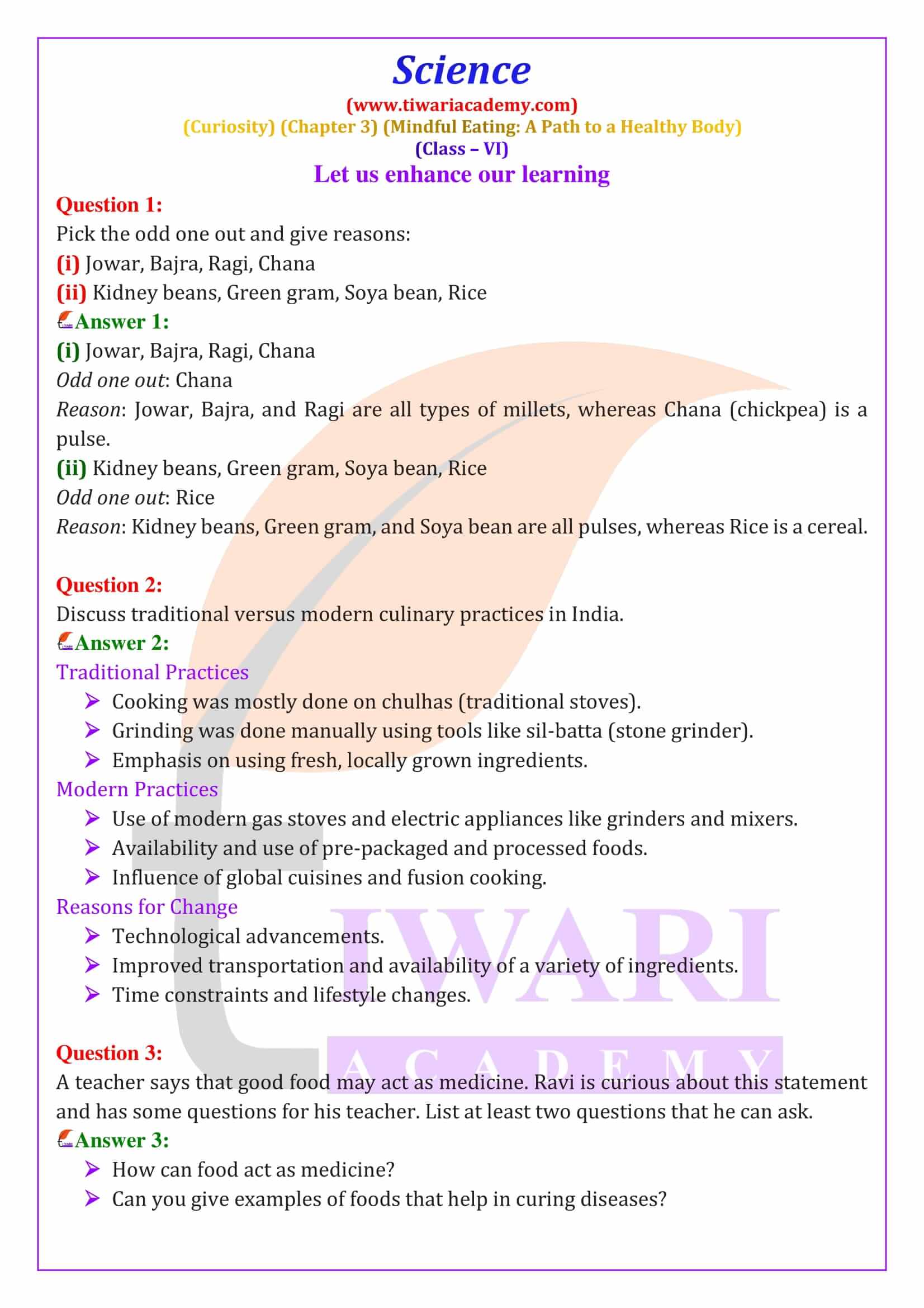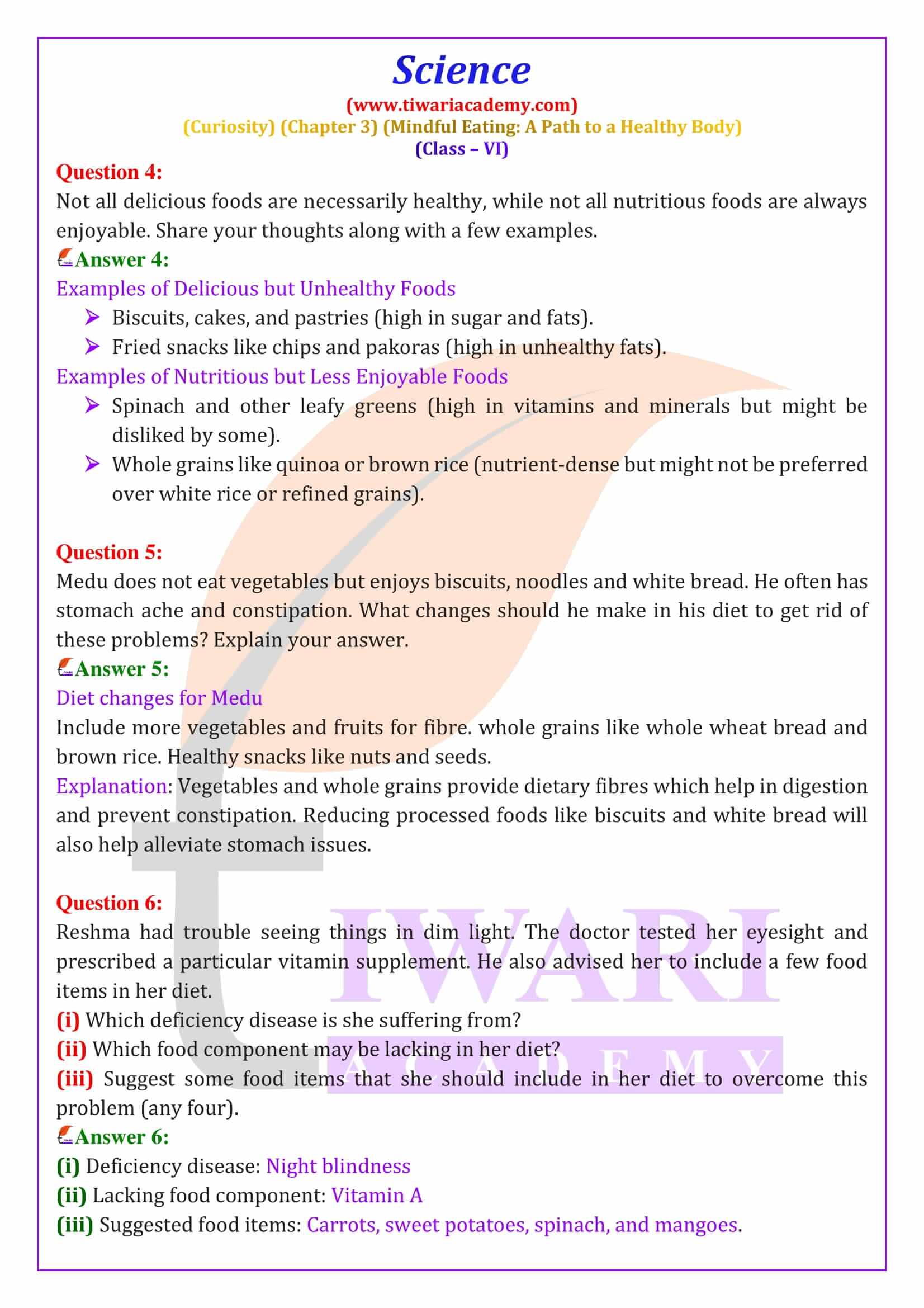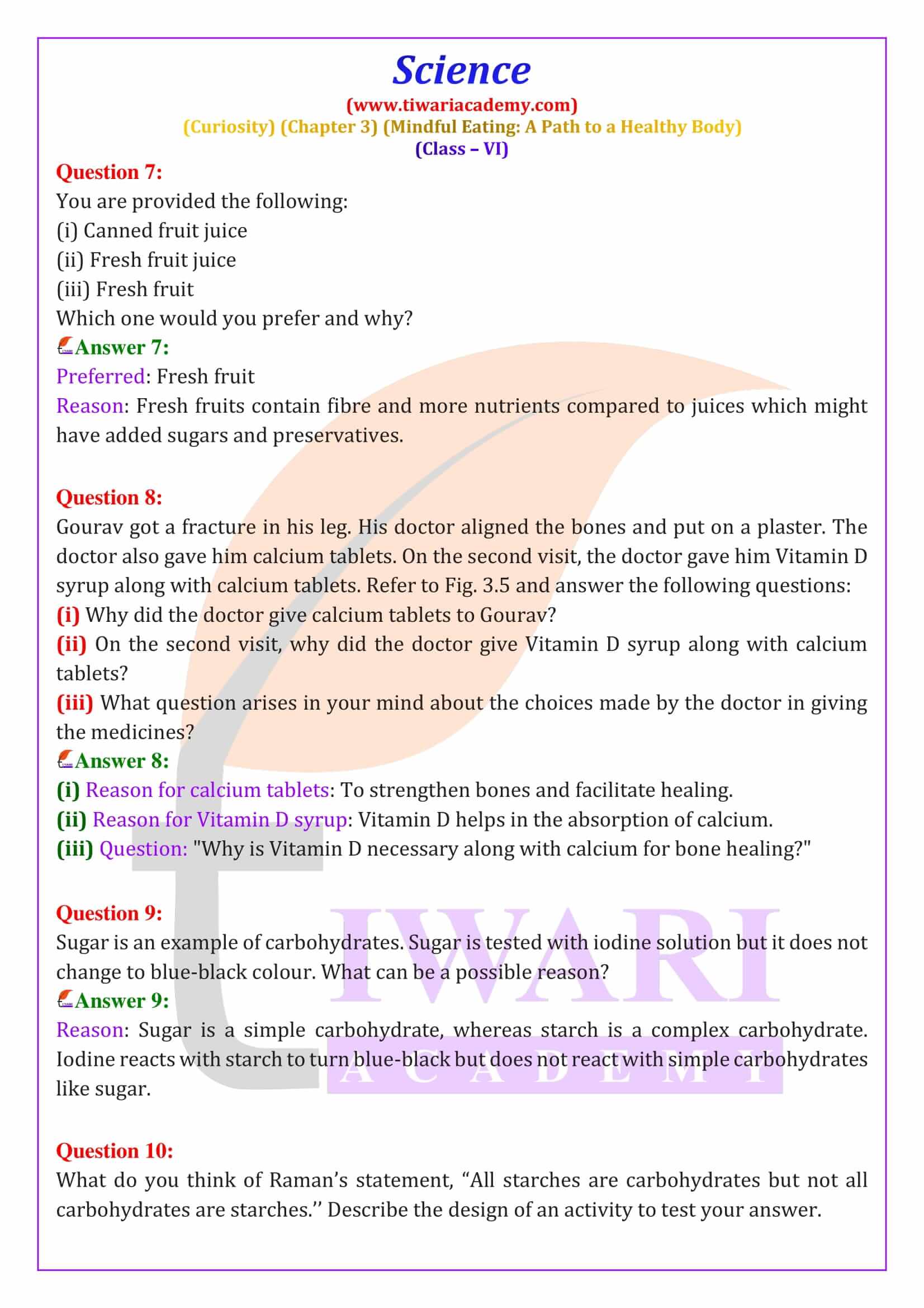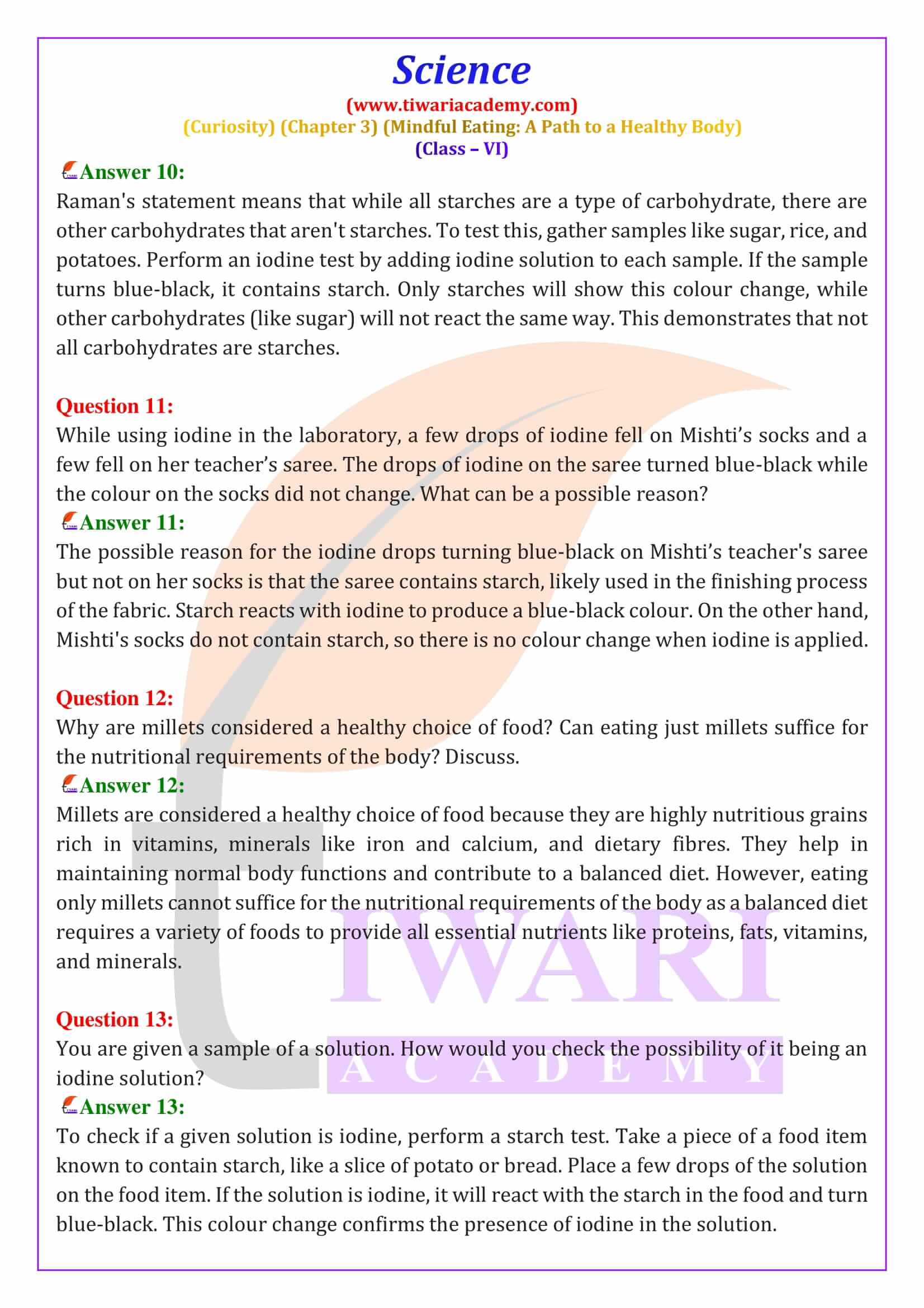NCERT Solutions for Class 6 Science Curiosity Chapter 3 Updated for for Session 2025-26, Mindful Eating: A Path to a Healthy Body in Hindi and English Medium. The question answers for class 6 Science chapter 3 are updated according to new academic year based on NEP 2020.
Class 6 Science Curiosity Chapter 3 Mindful Eating: A Path to a Healthy Body
Class 6 Science Curiosity Chapter 3 The Importance of Mindful Eating
The Chapter 3 of class 6 science, opens with a wise saying that emphasizes the importance of consuming wholesome food in moderate quantities suitable for the season, time and place. This sets the tone for understanding how mindful eating can lead to a healthy body. Class 6 Science Curiosity Chapter 3 also highlights the curiosity of students, Medu and Mishti, about the significance of food in sustaining life, leading to an exploration of what and how we eat.
Exploring Food Diversity in Class 6 Science Chapter 3
Class 6 Science chapter 3 encourages students to record and analyse their weekly food intake, comparing it with their peers to understand the variety in diets. This activity highlights the diversity in food habits across different regions of India, influenced by local crops, culture and traditions. Students are prompted to explore and document traditional foods and beverages from various states, understanding the relationship between local agriculture and diet.
Evolution of Culinary Practices
Students learn about the changes in cooking practices over time through interviews with elderly people. The comparison between traditional methods, such as cooking on a chulha and grinding with a sil-batta, and modern methods using gas stoves and electric grinders, illustrates technological advancements. The chapter 2 of 6th science underscores how these changes have made cooking more convenient and efficient.
Class 6 Science Curiosity Chapter 3 for Components of Food
The Class 6 Science Curiosity Chapter 3 describes the components of food, explaining the roles of carbohydrates, fats and proteins in providing energy, building the body and supporting bodily functions. Through real-life examples and activities, students learn to identify sources of these nutrients in their diet. The importance of vitamins and minerals is also emphasized, with case studies highlighting the effects of deficiencies and the need for a balanced diet.
Testing Food Components
Practical activities are introduced to test for the presence of starch, fats and proteins in various food items. These experiments help students understand the nutritional content of their food and the significance of each component. Class 6 Science Curiosity Chapter 3 encourages students to analyze their own diet, ensuring it includes all essential nutrients, roughage and water for a balanced diet.
Millets and Food Miles in Class 6 Science Chapter 3
The chapter 3 in class 6 science, highlights the nutritional benefits of millets, native grains of India that are rich in vitamins, minerals and dietary fibers. Students are encouraged to consider the concept of food miles, understanding the journey food takes from farm to plate. This chapter promotes the idea of supporting local farmers, reducing food miles and minimizing food wastage, fostering a respect for the effort involved in food production.
The complete chapter 3 of class 6, collectively aim to educate students about the importance of mindful eating, the diversity of food habits, the evolution of cooking practices, the components of a healthy diet, practical ways to analyze food and the significance of local, sustainable eating practices.






